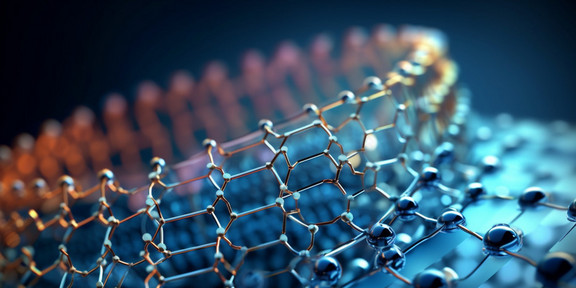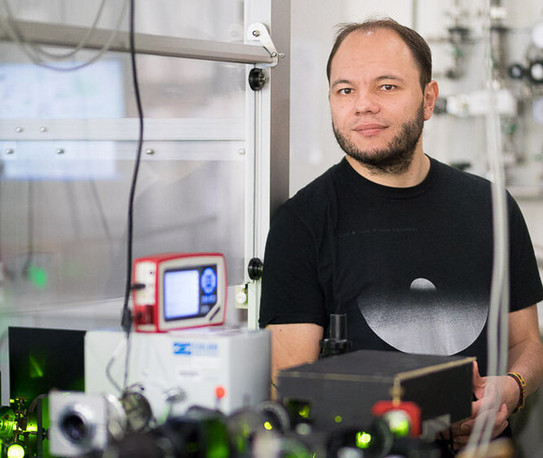Research Team controls Chemical Reactions in Solids for the First Time
- News
- Research

A team of researchers from the Department of Physics at TU Dortmund University, together with cooperation partners from Harvard, has succeeded for the first time in controlling chemical reactions in a complex semiconductor system. This is particularly important for future applications of nanomaterials, among other things. The team led by TU physicist Prof. Marc Aßmann recently published their findings in the renowned journal "Nature Communications".
One of the most fundamental chemical reactions is the exchange of electrons between a charged ion and an electrically neutral molecule. The charged ion "steals" an electron from the molecule and thus becomes electrically neutral, while the previously neutral molecule remains ionized. For the simplest case of the reaction of individual ions with individual molecules, the French physicist Paul Langevin developed a model for chemical reaction rates as early as 1905.
However, these reactions are not only of great interest in chemistry, but also in complex semiconductor systems. A semiconductor crystal consists of a lattice of regularly arranged atoms. Every semiconductor crystal also has places with structural defects, however, where atoms are missing or the wrong atoms are incorporated. These imperfections are often electrically charged and then behave like ions. The role of the neutral molecules in the solid state is played by so-called excitons, which move through the crystal and react with the impurity. Unlike in chemistry, however, the reaction rate in the semiconductor cannot be controlled. One of the reasons for this is that the excitons move through the crystal mainly at random.

"A big step towards efficient quantum technologies"
This is where the researchers started and illuminated the crystal with customized laser light to generate so-called Rydberg excitons, which are significantly larger than conventional excitons. The advantage: the larger the exciton, the easier it is for the charged impurity to attract it and the faster the reaction takes place. The researchers were thus able to demonstrate for the first time that the reaction speed can be specifically adjusted in this way: An exciton with a diameter fifty times larger reacts more than three thousand times as often with an impurity. After neutralizing the impurities, the crystal showed twice as much absorption of the incident light.
"The electrical interference fields that emanate from charged impurities are one of the biggest problems in the application of nanomaterials," says Prof. Marc Aßmann. "Being able to specifically neutralize these fields would be a big step towards efficient quantum technologies. In future work, we want to evaluate whether we can use rydbergexcitons for this purpose under realistic working conditions."
Contact person for queries:










